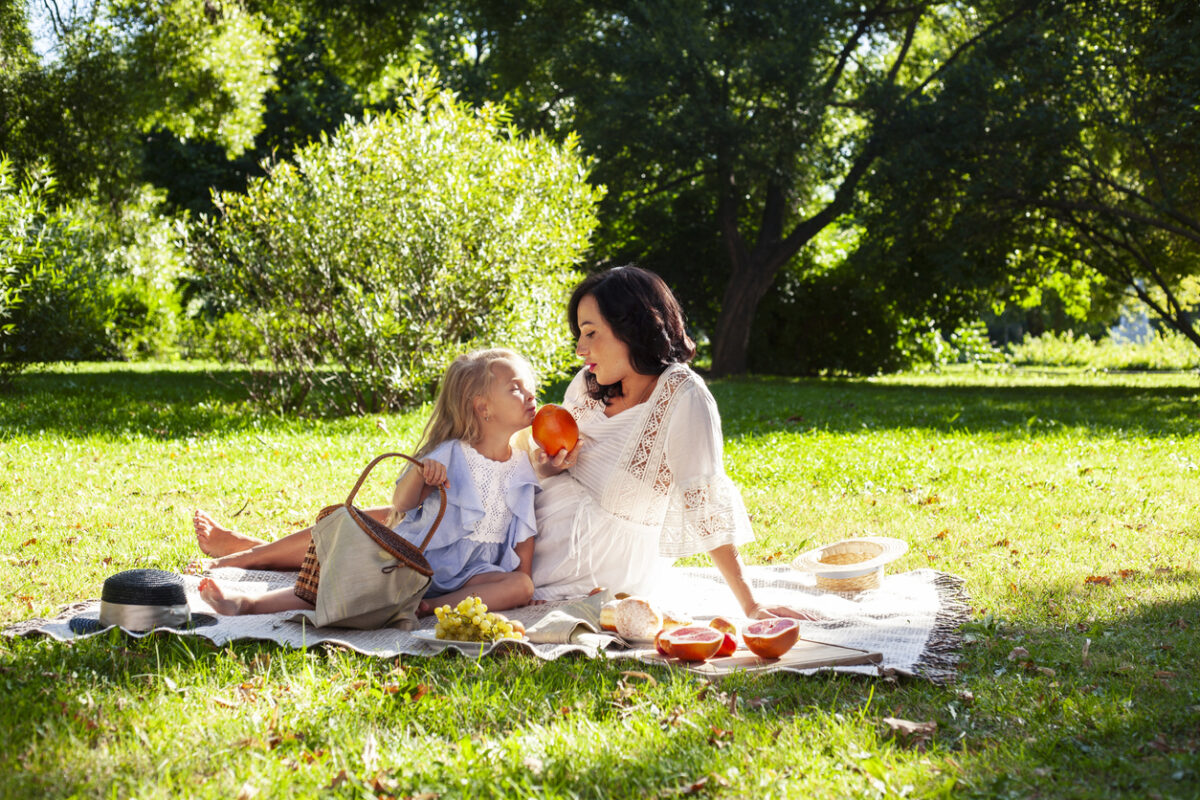Lessons from the dining hall: the history of free school meals and the changes needed to improve pupils’ nutrition

School meals have always been vital to ensuring no child is left hungry in the UK. The need for sufficient access to food was seen most recently during the pandemic, when Manchester United footballer Marcus Rashford campaigned for the provision of free school meals in the UK for children from financially struggling families throughout the summer months of 2021. Between January 2020 and January 2021, the percentage of fully funded school meals increased from 17.3% to 20.8%, highlighting the financial hardships experienced by many during the height of the COVID-19 pandemic.
For many children, school meals are the only full meal they eat in a day. What they consume however, let alone its nutritional value, hasn’t always been at the forefront of Government policy making. Rather, it’s been more of an afterthought, with budgets, food shortages, and worries about food wastage often resulting in unhealthy meals being offered in canteens.
From spam and pizza to the School Food Standards
School food provision first became mandatory in 1906, when the British Parliament passed the Education Provision of Meals Act, which gave Local Education Authorities (LEAs) the role of providing free meals to schoolchildren in primary schools. This was 36 years after compulsory primary education was made legal with the 1870 Forster Education Act. Prior to then, children often went to school undernourished and unable to learn, which sometimes resulted in teachers providing them with meals using their own money. Free meals were also offered by organisations like the Salvation Army through the ‘Food for the Million’ social scheme introduced in 1870.
School canteen committees were created in 1906, but not all LEAs implemented the changes immediately, with only 113 out of 328 being recorded as giving out meals and milk to poorer children in primary schools. School food around this time consisted of a glass of milk, a hot meal, usually porridge, and bread with an animal-based dripping.
The need for free school meals was seen again in the 1920s, with around 600,000 meals being provided. Around this time hot and hearty dishes such as lamb stew were popular. Sweet desserts, such as treacle tart, also began to be introduced.
From 1944 a new National School Meals Policy was brought in, requiring LEAs to provide school food to everyone. Poorer children would still be provided with free food, while others could buy meals at a subsidised price. The provision of free milk was also made obligatory.
After the Second World War, the 1944 Education Act required all LEAs to offer a midday meal that followed specific nutritional guidelines for the first time. With food still being rationed in the country, preserved foods with a long shelf life such as canned fish and meats, as well as potatoes, became popular in the dining hall. In some instances, tinned desserts such as rice pudding were also on offer. When rationing ended in 1954, the food served to pupils improved, but it was not necessarily any healthier. Fish and chips, corned beef and more desserts including spotted dick and custard featured on many menus.
During the Labour Government period from 1964 to 1970, access to school meals became more difficult with parents having to pay more for their children’s lunches. Free milk was also abolished in secondary schools in 1968, and later from primary school children in 1971 when Margaret Thatcher was Education Minister.
The 1980s saw a rise in production of soft drinks and processed foods. While some schools started to offer popular fast-food options such as pizza, chips and breaded meats, fewer pupils continued to take up school meals after this period. Part of the reason behind the decline in popularity of school meals was the introduction of the Education Act in 1980. This law abolished the requirement for all children to be given access to school meals, unless their family received benefits or a family income supplement. This law was said to be an attempt at reducing food waste, as children showed a lack of interest in school food. Eating spaces for pupils bringing in their own lunch were still required, but the law did influence some counties to abandon school meals altogether including Lincolnshire and Dorset.
The 1980 Act also allowed many schools to give the role of producing school meals over to private contractors, making it more difficult to monitor the quality of food served, and practically eradicated any nutritional guidelines for school food altogether. Another destructive law brought in at this time was the 1986 Social Security Act, which resulted in over 500,000 schoolchildren from low-income families to lose access to free school meals.
From the 1980s onwards, not much was done to reduce high levels of salt sugar and fats in school food. By the time the new Labour Government took over in 1997, individual choice was considered more important than the promotion of healthier school meals – another move to cut food waste. With unhealthy food now the norm for children in the UK, a report published in 1999 revealed that the average diet of a four-year-old was healthier in the 1950s than in the 1990s.
Even with the declining nutritional value in schoolchildren’s diets, new standards weren’t brought into place for school meals until 2001 during Tony Blair’s tenure. This period also saw the launch of chef Jamie Oliver’s ‘Jamie’s School Dinners’ documentary, which campaigned for more schools to reach national food standard targets, and tried to encourage pupils to become more enthusiastic about healthy food.
Too little too late?
In 2013, then Education secretary Michael Gove tasked the owners of the LEON restaurant chain John Vincent and Henry Dimbleby to come up with recommendations for the new School Food Plan. The plan tried to ensure nutritional standards for schools were in place. Alongside the new plan, the Department for Education published a School Food Standards guide, promoting a healthy and balanced diet featuring fruit and vegetables and unrefined carbohydrates; meat, fish, eggs, beans and other dairy-free proteins; milk and dairy foods, and a limited amount of foods that were high in fat, sugar and salt.
Despite this new plan, pupils’ diets have not become much healthier, with takeaways still being a popular option at lunchtime. In 2018, a study from the British Nutrition Foundation highlighted around 60% of secondary school pupils bought a takeaway including fried chicken or chips at least once during the school week.
“Jamie Oliver’s campaigns to improve school meals have essentially stagnated, there hasn’t been any significant change there,” says Dr Shireen Kassam, founder of Plant-Based Health Professionals, Lifestyle Medicine Physician, and consultant haematologist. “We know that only 18% of children are meeting their five portions of fruits and vegetables a day, probably around one or 10 to 20% of people aren’t even eating any vegetables,” she says. “The latest Food Foundation report suggests that 16% of vegetables are coming from baked beans or pizza. Schools are really trying to do the right thing, but depending on where you are, there’s different level of skills and knowledge and acceptance, from caterers, but also parents about what should be offered and how to support people to make these healthier choices.”
The charity Food for Life’s ‘State of the Nation’ report from 2019 revealed more than 60% of schools were not meeting the School Food Standards, and that general non-compliance was rising. “That’s an eye-watering amount of schools,” says Nicole Pisani, Executive Chef and Curriculum Director of Chefs in Schools, a London-based charity working to improve food at schools in deprived areas across the UK.
Obesity is a health epidemic in the UK affecting all ages. Childhood obesity has reached the highest levels in England since the start of the pandemic. The ‘State of the Nation’ report shows the UK has the largest amount of obesity in teenagers aged 15 to 19 years old compared to the rest of Europe. It is expected that four in 10 children will leave primary school overweight or obese by 2024. Another worrying fact the report notes is the rise in fatty liver disease in young people. A study of 4,000 young people revealed that 20% were living with the disease.
But are school meals to blame? “The obesity crisis amongst all age groups is not down to one single factor”, says Dr Kassam. “I think the biggest factor is our food environment, whether it is our immediate food environment at home, or in public sector catering. Some of the most influential environments are also supermarkets and fast-food outlets.”
While caterers need to develop healthier menus, the ‘State of the Nation’ report highlights they currently face a combined obstacle of limited budgets and food shortages due to Brexit and the lack of a trade deal. According to Dr Kassam however, while these factors play a part in improving the food on offer, good training for caterers is needed if we want to see positive changes on school menus. “From the programmes that I’ve seen reports from, it’s really about knowledge and skills, understanding how to make good food tasty and appealing”, she says. “I think there’s a vast difference in terms of skill sets within the catering system, but we just need to be able to nudge people to make those choices. It sometimes is a bit more expensive, depending on what the baseline food provision is for that school, but I don’t think cost is as big a barrier as people suggest. There are ways of being able to adapt menus to make it highly cost effective.”
As well as ensuring caterers are well trained, schoolchildren should have access to a basic education on eating and cooking well, says Dr Kassam. “Most of us are not actually adopting those healthy behaviours ourselves, so we need to have champions and role models around children who understand what healthy food is, how to support people to make the right choices and make enjoyable food and make it the norm.”
Unfortunately, food and nutrition courses are experiencing a decline in the UK. The GCSE uptake of the subject is decreasing, and it is also currently the only national subject to not have an A-Level. As a result, there is a shortage of teachers in the profession, and fewer children are leaving school with an understanding of nutritious food and cooking skills.
Key players who can not only emphasise the importance of food education, but also bring positive changes to menus, are school governors. According to the Department for Education, governors have the vital role of collaborating with senior figures in schools to create “a whole school food policy that sets out the school’s approach to its provision of food, food education (including practical cooking), the role of the catering team as part of the wider school team and the school’s strategy to increase the take-up of school lunches.” While they don’t work directly in canteens or in cooking classes, they are responsible for ensuring schools embrace a healthy eating culture.
The work of charities like Chefs in Schools shows how food education can benefit the lives of schoolchildren and shouldn’t be left off the curriculum. “I’ve been working in school food for the last eight years, and I think there’s been a huge shift for the better post COVID,” says Pisani. The charity currently works with 58 schools in the UK, with 56 located across London, one in Bournemouth and the other in Sheffield.
The charity aims to make small, but delicious changes to school food by training the catering teams to use good, seasonal ingredients, and integrate nutritious foods into meals such as blitzing a whole roasted cauliflower into mashed potato. “We try to get as many nutrients into children’s food as possible in clever ways, like through a butternut squash cake or a black bean cake,” says Pisani. “We reduce a lot of the sugars and try to get a lot of the five a day into desserts, which are very popular.” One of the most successful tactics is giving children ownership of their food choices in the canteen, as not only do they consume nutritious food, but also learn more about what they’re eating and what they enjoy. “They get to decide if they want to try it or not, and with most of the kids, if you went around the tables and said, ‘why don’t you just try it?’ They probably would.”
Besides helping children to learn as they eat, the charity has also helped pupils understand basic skills for dealing with food every day, such as understanding how to read the front-of-pack traffic-light label system. While this may seem simple, recent research has shown only 16% of Britons understand nutrition labels.
While the state of current school food in the country is hardly something to celebrate, schools are eager to change for the better, says Pisani. “The kind of conversation around school food is changing,” she states. “A lot of schools are now saying that school meals are not only important for making sure children are fed but are fundamental to forming a child’s relationship with food for the rest of their lives.”
A healthier greener menu for the future
As schools start to see the value of healthy school food, and of an engaging, interactive dining hall experience, the advantages of developing more sustainable menu choices for children are also being recognised.
In February 2022, Oxfordshire City Council agreed to use purely plant-based catering during official events and pledged to increase the amount of vegan food options in schools. That same month also saw the launch of the Green School Menu League, a competition asking schools to come up with the greenest menus. Created by plant-based food company Meatless Farm and non-profit group ProVeg’s School Plates programme, the competition aims to educate and inspire students to eat healthier, plant-based meals that are less harmful to the environment.
While there seems to be an enthusiasm towards providing more plant-based options, the current School Food Standards don’t prioritise vegan or vegetarian options for children and still recommend meat to be on school menus three times a week. “That’s very outdated advice now,” Dr Kassam says, “there needs to be an update in the understanding of provision of healthy proteins. The guidance now says to choose plant proteins over animal proteins.” The availability of non-dairy options in schools isn’t any better, with cow’s milk regularly taking precedence, she explains. “The Vegan Society recently supported a father to win a legal challenge against a school that wouldn’t supply soya milk as an alternative for his vegan child. When you consider that 60 to 70% of people of colour of the global majority are lactose intolerant, it’s not a very inclusive policy. We could be making better choices for our children.”
Data shows the British public’s opinion on healthy and vegan school food is encouraging. The 2019 ‘State of the Nation’ report reveals most Brits want to see nutritious and healthy diets promoted at schools. 97% of respondents were in favour of a healthy schools rating scheme, while 85% thought such a scheme should be obligatory for all schools in the country. A recent survey from the Vegan Society also showed that 69% of parents and guardians approved of more vegan options being on offer, proving there is a willingness for change to take place. Whether the desire for change is enough to make real improvements inside the canteen in the future remains to be seen.








